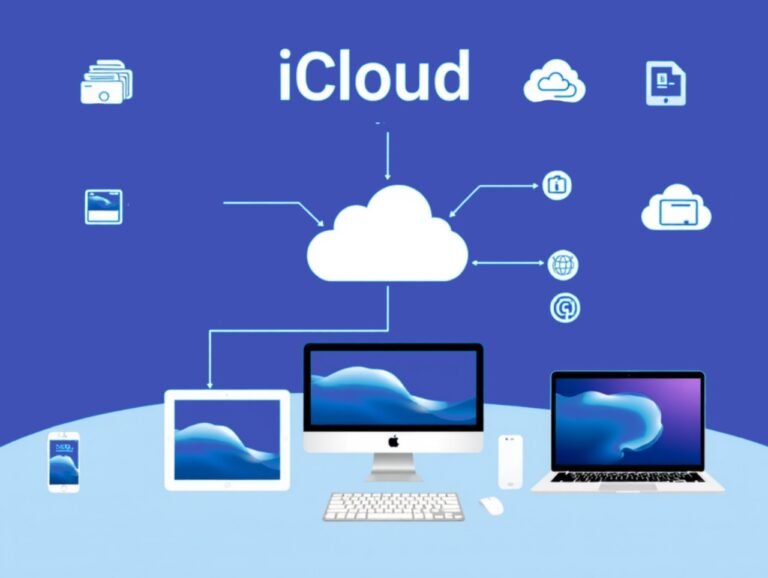PeopleTools ATT: Full Guide to Login, Setup & Troubleshooting (2025 Update)
What is PeopleTools ATT?
PeopleTools ATT is a critical software suite developed by Oracle, specifically designed to support and enhance the PeopleSoft application environment. ATT, often referring to its implementation within the AT&T ecosystem, is used by employees and administrators to access, manage, and interact with PeopleSoft applications, which are widely adopted for human resources, finance, supply chain, and enterprise services.
At its core, PeopleTools provides the infrastructure needed to build, customize, and maintain PeopleSoft applications. ATT’s use of this system ensures seamless operations across its vast enterprise environment. The suite includes tools for development (such as Application Designer), administration (like PeopleSoft Update Manager), reporting (through Query Manager and BI Publisher), and integration technologies.
Key Features of PeopleTools ATT
PeopleTools ATT comes with a wide range of capabilities that allow organizations like AT&T to streamline business processes and improve data accuracy and accessibility. Some of the main features include:
- Application Designer: Allows users to develop and modify PeopleSoft applications.
- PeopleCode: A proprietary scripting language used within PeopleTools for logic customization.
- Component Interface: Facilitates interaction with business logic from external systems.
- Integration Broker: Manages real-time and batch integrations with third-party systems.
- PeopleSoft Query and BI Publisher: Enables creation of customized reports.
A deeper overview of PeopleTools ATT features is available on What’s On Tech.
Logging into PeopleTools ATT
Accessing PeopleTools ATT typically requires employee credentials and secure network access. The login process is straightforward but strictly governed by organizational security policies. Here’s a basic outline of how to log in:
- Access the Portal: Use the official AT&T internal employee portal or a designated PeopleSoft login URL. You can log in via the official AT&T PeopleTools portal.
- Enter Credentials: Provide your employee ID and password.
- Two-Factor Authentication (2FA): Most access points now require a second verification step, like a code sent to a mobile device.
- Navigate to PeopleTools: Once logged in, locate the PeopleSoft environment and access PeopleTools from the admin or development panel.
Setting Up PeopleTools ATT
Setting up PeopleTools ATT involves both infrastructure preparation and software configuration. For IT administrators, this can be a complex process, especially in large enterprise settings. Here’s a general overview of the setup process:
- Server Installation: PeopleTools requires web, application, and database servers. These should be configured according to Oracle’s guidelines.
- Database Configuration: Typically, Oracle or SQL Server databases are used. Tablespaces and user permissions must be defined correctly.
- Web Server Setup: Tools like WebLogic or Oracle HTTP Server are configured to manage web access.
- Application Deployment: PeopleSoft environments (e.g., HRMS, FSCM) are deployed on top of the infrastructure.
- Security Configuration: LDAP integration, SSL, and role-based access controls are essential.
- Testing and Validation: Before moving to production, thorough system testing is critical.
You can follow a detailed walkthrough in this PeopleTools ATT setup guide.
Navigating the PeopleTools Interface
Once inside the system, users can interact with various PeopleTools modules depending on their roles. The interface is modular and highly customizable. Key interface areas include:
- Homepage and Dashboards: Provides quick access to tasks, alerts, and recent activity.
- Navigator: A tree-based menu to access different application modules.
- WorkCenter: Combines transactions, reports, and alerts into a single screen.
- Related Actions: Allows contextual navigation based on the current screen.
- Fluid UI: A responsive interface optimized for tablets and mobile devices.
Understanding how to use these components effectively is essential for maximizing productivity and reducing training time.
Common Issues and Troubleshooting PeopleTools ATT
Even with robust architecture, PeopleTools ATT is prone to a few recurring issues. Here are some of the most common problems and their solutions:
- Login Errors: Usually caused by expired passwords or disabled accounts. Users should reset credentials via the IT helpdesk.
- Browser Compatibility: Some features may not work properly on unsupported browsers. Stick to officially supported browsers like Chrome or Edge.
- Timeouts and Session Drops: Adjust session timeout settings or check network stability.
- Missing Permissions: Users unable to access features may lack the proper roles. Admins can assign roles through the Security module.
- Data Not Saving: Ensure that Save buttons are clicked, and all mandatory fields are filled.
Security and Compliance in PeopleTools ATT
Security is a major concern, especially when handling sensitive HR or financial data. PeopleTools ATT provides several layers of protection:
- Role-Based Access Control (RBAC): Access is granted based on user roles.
- LDAP and Single Sign-On (SSO): Centralized authentication for all users.
- Data Encryption: Both in-transit and at-rest encryption options.
- Audit Trails: Logs of user activity for compliance tracking.
- Regular Patches and Updates: Ensures the system is protected against known vulnerabilities.
Organizations must also comply with industry regulations such as HIPAA, SOX, and GDPR, depending on the nature of their data.
Best Practices for PeopleTools ATT Users
To make the most of PeopleTools ATT, users and administrators should adopt best practices:
- Regular Training: Continuous learning helps users stay updated with features.
- Documentation: Maintain internal guides for processes and customizations.
- Change Management: Use version control and test changes in a sandbox environment.
- Monitoring: Use built-in and third-party tools to monitor performance.
- Feedback Loops: Encourage users to report issues and suggest improvements.
These practices ensure system stability, reduce errors, and improve user satisfaction.
Future of PeopleTools ATT in 2025 and Beyond
As enterprise systems evolve, PeopleTools continues to adapt with emerging technologies. In 2025, we can expect increased integration with AI, machine learning, and cloud-native architectures. Key trends include:
- More Fluid UI Features: Enhancing user experience across all devices.
- AI-Based Automation: Suggesting actions or auto-filling data based on user behavior.
- Increased Use of Oracle Cloud Infrastructure (OCI): For better scalability and cost-efficiency.
- Enhanced DevOps Integration: Faster deployments using CI/CD pipelines.
- Advanced Analytics: Built-in tools for better data insights and forecasting.
PeopleTools ATT will likely continue to serve as a backbone for enterprise application development, especially in organizations like AT&T that rely heavily on custom workflows and secure integrations.
Conclusion: Why PeopleTools ATT Matters
PeopleTools ATT is more than just an interface for PeopleSoft—it’s a complete ecosystem that supports thousands of business functions behind the scenes. From managing HR operations to overseeing financial workflows, its flexibility and power make it an essential tool for enterprise efficiency.
By understanding how to log in, set up, troubleshoot, and maintain security, users and admins can ensure they get the most out of this robust system. And with continual updates on the horizon, PeopleTools ATT remains a future-ready platform designed to meet the growing demands of enterprise IT.
Read Also Our This Post: iCloud GU: Everything You Need to Know (Setup, Login & Fixes!)







